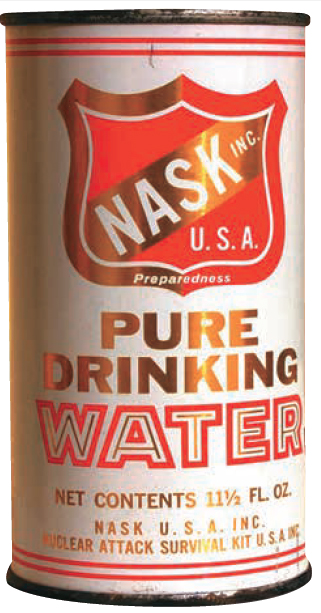How did U.S. foreign policy change under Kennedy?
Printed Page 870

Preparing for the Worst during
the Cuban Missile Crisis
Waiting out the tense days after President Kennedy issued the ultimatum to the Soviet Union to halt shipments of missile materials to Cuba, many Americans tried to prepare for the worst possible outcome. Owners of Chalet Suzanne, a hotel in Lake Wales, Florida, canned several thousand cases of well water, labeled “NASK” for Nuclear Attack Survival Kit. Photo by David Woods.
JOHN F. KENNEDY MOVED quickly to pursue containment more aggressively and with more flexible means than the Eisenhower administration had. Kennedy declared that the United States would “pay any price, bear any burden, meet any hardship, support any friend, oppose any foe to assure the survival and the success of liberty.”
CHRONOLOGY
1961
- – Bay of Pigs invasion.
- – Berlin Wall is erected.
- – Kennedy increases military aid to South Vietnam.
- – Peace Corps is created.
1962
- – Cuban missile crisis.
1963
- – President Kennedy is assassinated; Lyndon B. Johnson becomes president.
1969
- – American astronauts land on the moon.
Key Elements of Kennedy’s Foreign Policy
> Key Elements of Kennedy’s Foreign Policy
- Expansion of the United States’ ability to fight conventional battles and engage in guerrilla warfare
- Acceleration of the nation’s space exploration program
- Increased attention to the third world
- Escalation of the nuclear arms race
- Commitment of U.S. arms and personnel to South Vietnam